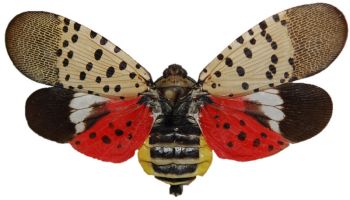Fall and Winter are The Best Times For Tree Trimming
The warm, sunny days of spring and summer are behind us, and cooler days are here. Seeing the beautiful leaves from summer change color and fall off the trees is one great thing about fall, and those leaves falling is a good reminder that fall and winter are the best times for tree trimming and shrub pruning. You may have heard this before and wondered why, so today we discuss some of the reasons.
What Makes Fall and Winter the Best Times for Tree Trimming and Pruning
As everyone knows, deciduous trees lose their leaves in the winter, revealing all of the branches previously hidden under the foliage. Seeing the beautiful, colorful leaves fall off might make some people sad. However, bare tree branches do make the task of diagnosing issues and trimming trees much more manageable. In addition, the bare canopies of the trees make the tree structure much easier to see. As a result, arborists can more easily remove dead or vulnerable branches.
The frozen, snow-covered ground also helps arborists by allowing us to reach areas near the tree or shrubs that are usually inaccessible with our equipment. As much as we love leaves in the spring and early summer, having them out of the way makes our trimming and pruning easier. In addition, when the ground is frozen the equipment is less likely to compact the soil near the trees and shrubs.
Tree Trimming and Pruning Prepares Trees for Winter
Taking care of tree trimming in fall and early winter months is a proactive step. When winter snow and ice come, branches that are already vulnerable are more likely to fall. If they do, homeowners may risk harm to property or persons nearby. If trees receive regular maintenance like trimming and pruning, they are less likely to have branches that easily break.
Easier to Identify Issues
Deciduous trees lose their leaves in the winter, revealing all branches previously hidden under the foliage. Seeing the beautiful, colorful leaves fall off might make some people sad. However, bare tree branches do make the task of diagnosing issues simpler. In addition, the bare canopies of the trees make the tree structure much easier to see. As a result, arborists can more easily remove dead, vulnerable, or diseased branches. The frozen, snow-covered ground also helps arborists by allowing us to reach areas near deciduous trees without our equipment compacting the soil near the trees and shrubs.
Promoting Tree and Shrub Health
During spring and summer, trees and shrubs are growing. Dormancy allows wounds from winter pruning and trimming to heal more quickly since the tree is not expending energy on new growth.
Support Disease Management
Another reason that fall and winter are the ideal times for shrub and tree pruning is that disease and insect damage are less likely. Trimming and pruning during the late spring and summer can expose trees and shrubs to diseases. When decay occurs, the decay can attract insects to the tree and cause more damage.
Knowing your area’s trees, shrubs, insects, and diseases can be very helpful. A certified arborist or other tree specialist can advise you on the best practices for your space and your specific trees. Trimming and pruning in late winter, when insects are the least active, will help keep your trees and shrubs healthy.
Reduce Leaf Clean-up
If you hate raking your property every other week in the fall, now is a great time to call the professional arborists at Stein Tree Service. Our team will carefully and cleanly remove problem tree branches and thin trees to improve overall health, with the added benefit of reducing your late-fall leaf clean-up. Trimming before all the leaves fall can also help reduce gutter build-up where limbs overhang your Wilmington area home.
Special Tree Trimming and Pruning Concerns
Though late fall and winter through early spring are generally the best times for tree trimming, some exceptions apply.
Flowering Trees


As we have mentioned in a previous article, spring flowering trees should be pruned after they have flowered. This practice allows for the most blooms in the following year. More blooms lead to better aesthetic appeal and also aid in pollination.
Damaged Trees
If a tree is damaged and at risk of falling or losing branches, a delay in action may lead to injury or property damage. Knowing what to look for is essential. Here is a short list of issues to look out for that could cause mean “now is the best time to prune” ANY time of year.
- Weak, damaged, broken, or diseased branches and shrubs
- Branches and shrubs hanging over or making contact with power lines, roofs, sheds, or other structures
- Trees that lean at dangerous angles
What Tree Issues Should Homeowners Look Out For?
Trees weakened due to disease, infestation, or something else are the most at risk for storm damage. Below are several signs that could indicate trouble for your trees.
Branches that hang over or make contact with power lines. If branches are already touching power lines, seek a professional tree care specialist to perform remedial tree trimming and pruning as soon as possible. If they are hanging over or leaning near power lines, they could cause problems in the next strong storm.
- Branches that hang over roofs, sheds, or other structures. These tree branches could cause expensive property damage in a violent storm. If the trees overhang your neighbor’s yard, you could be liable for any damage to their property.
- Trees that lean at dangerous angles. If a tree is leaning already, too much pressure could cause uprooting in wet and windy conditions. In such a situation, a professional can determine whether tree removal is necessary for safety.
- Tree Decay. Mushrooms or other fungal presence on trees indicates a problem. Decay can cause tree weakness. Other signs of decay are unusual insect activity or hollow trunks.
- Tree damage. Obvious damage to large limbs could weaken the entire tree, so it should be evaluated to determine the risk.
Contact Stein Tree for Quality Tree Trimming and Shrub Pruning Services
The fall and winter make for the best times for tree trimming and shrub pruning. However, whenever you need professional tree care, you can count on an experienced arborist from Stein Tree Service. Since 1983, Stein Tree Service has provided the residents of Delaware and Pennsylvania with tree services, including regular tree trimming, removal, and emergency services. For a free consultation, contact us today.



